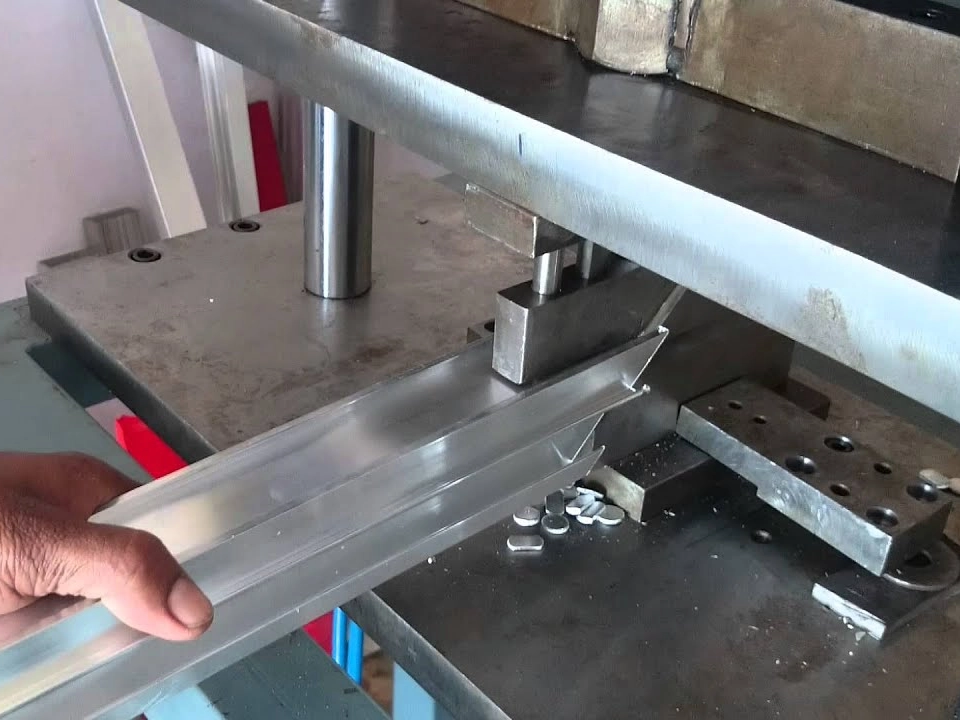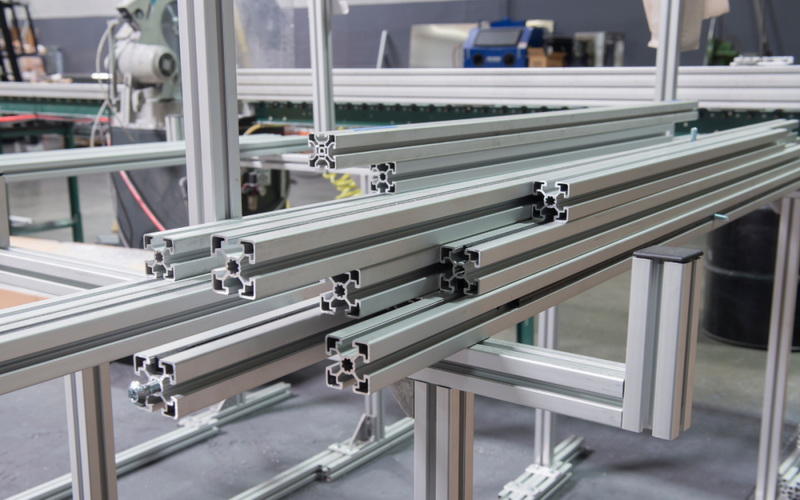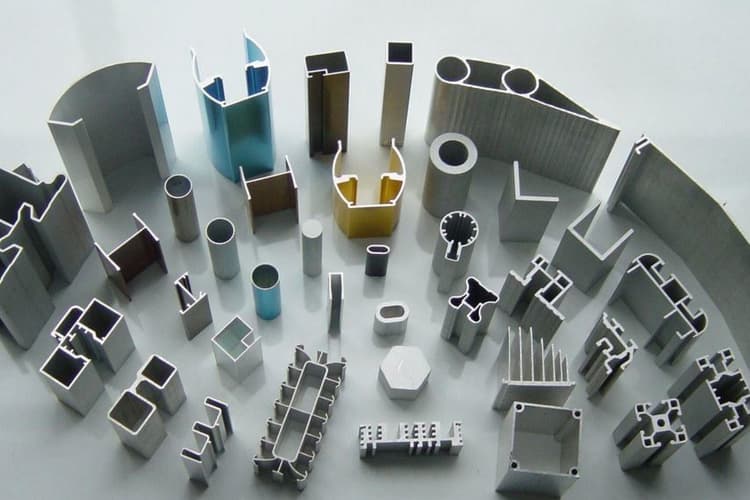Content Menu
● Introduction to Aluminum Extrusion
● The Aluminum Extrusion Process
● Types of Aluminum Extrusion
● Aluminum Extrusion Profiles
● Applications of Aluminum Extrusion
● Benefits of Aluminum Extrusion
● Aluminum Extrusion Alloys
● Aluminum Extrusion Dies
● Challenges in Aluminum Extrusion
● Future of Aluminum Extrusion
● Conclusion
● Frequently Asked Questions
>> Q1: What is the main difference between direct and indirect extrusion?
>> Q2: Can aluminum extrusions be welded?
>> Q3: How does the choice of alloy affect the extrusion process?
>> Q4: What are the environmental benefits of using aluminum extrusions?
>> Q5: How are tolerances controlled in aluminum extrusion?
Introduction to Aluminum Extrusion
Aluminum extrusion is a versatile manufacturing process that has revolutionized various industries, from construction to aerospace. This technique involves shaping aluminum alloy material by forcing it through a die with a specific cross-sectional profile. The result is a continuous length of material with a consistent cross-section, which can be cut and further processed to meet specific requirements.

The Aluminum Extrusion Process
The aluminum extrusion process is a fascinating blend of engineering and metallurgy. Let's break down the steps involved:
1. Billet Preparation: The process begins with an aluminum billet, which is a solid cylindrical block of aluminum alloy.
2. Preheating: The billet is heated to a temperature where it becomes malleable but not molten, typically between 800°F to 925°F (427°C to 496°C).
3. Lubrication: The die and other tools are lubricated to reduce friction and ensure smooth extrusion.
4. Extrusion: The heated billet is placed in a container and pushed through the die using a hydraulic ram. The pressure can range from 100 to 15,000 tons, depending on the complexity of the profile and the alloy being extruded.
5. Profile Emergence: As the aluminum exits the die, it takes on the shape of the die's opening.
6. Cooling: The extruded profile is cooled using air or water to solidify its shape.
7. Stretching: The profile is stretched to straighten it and relieve internal stresses.
8. Cutting: The long extrusion is cut to the desired length.
9. Heat Treatment: Depending on the alloy and desired properties, the extrusion may undergo heat treatment to enhance its strength and durability.
10. Finishing: The final step may involve surface treatments such as anodizing, painting, or powder coating.
Types of Aluminum Extrusion
There are several types of aluminum extrusion processes, each suited for different applications:
1. Direct Extrusion: The most common method, where the billet is pushed directly through the die.
2. Indirect Extrusion: The die moves against a stationary billet, reducing friction and allowing for longer extrusions.
3. Hydrostatic Extrusion: The billet is surrounded by a fluid medium, which helps distribute pressure evenly and allows for more complex shapes.
4. Tube Extrusion: A specialized process for creating hollow profiles using a bridge die or porthole die.
Aluminum Extrusion Profiles
One of the most remarkable aspects of aluminum extrusion is the variety of profiles that can be created. These profiles fall into three main categories:
1. Solid Profiles: These are the simplest forms, consisting of a solid cross-section. They are commonly used in structural applications.
2. Hollow Profiles: These profiles have one or more voids running through their length. They are ideal for applications requiring high strength-to-weight ratios.
3. Semi-Hollow Profiles: These have partially enclosed voids and offer a balance between the strength of solid profiles and the weight savings of hollow profiles.
Applications of Aluminum Extrusion
The versatility of aluminum extrusion has led to its adoption in numerous industries:
1. Construction: Window frames, door frames, curtain walls, and structural components.
2. Transportation: Automotive body parts, railway car components, and bicycle frames.
3. Electronics: Heat sinks, LED housings, and electronic enclosures.
4. Aerospace: Aircraft fuselage components and interior fittings.
5. Renewable Energy: Solar panel frames and wind turbine components.
6. Consumer Goods: Furniture, appliances, and sporting equipment.
7. Industrial Machinery: Conveyor systems, pneumatic cylinders, and robotic components.

Benefits of Aluminum Extrusion
Aluminum extrusion offers numerous advantages that have contributed to its widespread use:
1. Design Flexibility: Complex shapes can be created in a single piece, reducing the need for assembly.
2. Cost-Effectiveness: The process is efficient for both small and large production runs.
3. Strength-to-Weight Ratio: Aluminum extrusions offer excellent strength while remaining lightweight.
4. Corrosion Resistance: Aluminum naturally forms a protective oxide layer, enhancing durability.
5. Thermal and Electrical Conductivity: Aluminum's conductive properties make it ideal for heat sinks and electrical applications.
6. Sustainability: Aluminum is 100% recyclable without loss of quality, making extrusions environmentally friendly.
7. Surface Finish: Extrusions can be easily finished with anodizing, painting, or other treatments.
Aluminum Extrusion Alloys
The choice of aluminum alloy significantly impacts the properties of the final extrusion. Some common alloys used in extrusion include:
1. 6061: Known for its excellent corrosion resistance and good strength.
2. 6063: Offers good extrudability and surface finish, popular in architectural applications.
3. 7075: Provides high strength, often used in aerospace applications.
4. 5052: Known for its excellent formability and corrosion resistance in saltwater environments.
5. 3003: Offers good workability and corrosion resistance, often used in general-purpose applications.
Aluminum Extrusion Dies
The die is a critical component in the extrusion process. It determines the shape of the extruded profile and must be designed to ensure proper metal flow. Dies are typically made from tool steel and can be categorized into:
1. Solid Dies: Used for simple, solid profiles.
2. Hollow Dies: Used for creating profiles with internal voids.
3. Semi-Hollow Dies: Used for profiles with partially enclosed voids.
4. Multi-Hole Dies: Allow for the simultaneous extrusion of multiple profiles.
Challenges in Aluminum Extrusion
While aluminum extrusion offers many benefits, it also presents some challenges:
1. Die Design: Creating dies for complex profiles requires significant expertise.
2. Temperature Control: Maintaining the correct temperature throughout the process is crucial for quality.
3. Surface Defects: Issues like die lines or pick-up can occur if the process is not properly controlled.
4. Tolerance Control: Achieving tight tolerances can be challenging, especially for complex profiles.
5. Alloy Selection: Choosing the right alloy for the intended application and extrusion process is critical.
Future of Aluminum Extrusion
The aluminum extrusion industry continues to evolve, driven by technological advancements and changing market demands. Some trends to watch include:
1. Increased Automation: The integration of robotics and AI in extrusion processes.
2. Advanced Alloys: Development of new aluminum alloys with enhanced properties.
3. Sustainability: Greater focus on recycling and reducing the carbon footprint of extrusion processes.
4. Additive Manufacturing: Exploration of hybrid processes combining extrusion with 3D printing technologies.
5. Micro-Extrusion: Development of techniques for producing extremely small profiles for electronics and medical devices.
Conclusion
Aluminum extrusion is a versatile and efficient manufacturing process that has found applications across numerous industries. Its ability to create complex profiles with excellent strength-to-weight ratios, combined with aluminum's inherent properties, makes it an ideal choice for many modern engineering challenges. As technology advances and new alloys are developed, the potential applications for aluminum extrusions continue to expand, ensuring its relevance in the manufacturing landscape for years to come.

Frequently Asked Questions
Q1: What is the main difference between direct and indirect extrusion?
A1: The main difference lies in the movement of components. In direct extrusion, the billet is pushed through a stationary die, while in indirect extrusion, the die moves against a stationary billet. Indirect extrusion typically results in less friction and allows for longer extrusions.
Q2: Can aluminum extrusions be welded?
A2: Yes, aluminum extrusions can be welded. Common welding methods include TIG (Tungsten Inert Gas) and MIG (Metal Inert Gas) welding. However, care must be taken as welding can affect the properties of the aluminum, particularly in heat-treated alloys.
Q3: How does the choice of alloy affect the extrusion process?
A3: The choice of alloy significantly impacts the extrusion process. Some alloys are more easily extruded than others due to their flow characteristics when heated. The alloy also determines the final properties of the extrusion, such as strength, corrosion resistance, and surface finish.
Q4: What are the environmental benefits of using aluminum extrusions?
A4: Aluminum extrusions offer several environmental benefits. Aluminum is 100% recyclable without loss of quality, reducing waste. The lightweight nature of aluminum also contributes to energy savings in transportation applications. Additionally, the extrusion process itself is relatively energy-efficient compared to other manufacturing methods.
Q5: How are tolerances controlled in aluminum extrusion?
A5: Tolerances in aluminum extrusion are controlled through several factors:
1. Precise die design and manufacturing
2. Careful control of extrusion parameters such as temperature and pressure
3. Post-extrusion processes like stretching and heat treatment
4. Quality control measures including dimensional checks and material testing
Achieving tight tolerances can be challenging for complex profiles and may require additional machining for critical dimensions.
Hot Tags: Aluminum Extrusion Process, Aluminum Extrusion Applications, aluminum extrusion profiles, Aluminum Extrusion Manufacturing, Aluminum Extrusion Benefits, Aluminum Extrusion Industry, Aluminum Extrusion Alloys, Aluminum Extrusion Dies, Aluminum Extrusion Design, Aluminum Extrusion Types, China, manufacturing company, manufacturers, suppliers, factory, price, Pricelist, quotation, wholesale






















